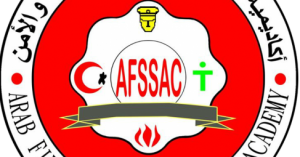
Fire risks and fire fighting training program by AFSSAC
Arab Fire Safety & Security academy offers Fire risks and fire fighting training program . That is an developmental program in firefighting .
Who should take this Fire risks and fire fighting training program ?
- Beginners firefighters .
- Personnel of the different professional and functional level in the different work site within the commercial , industrial, service and administrative facilities.
The program objectives:
- Developing the skills of fire-fighting using modern scientific techniques .
Interim goals (detailed) for the program: –
At the end of a cycle of this program, the trainee will be able to: –
- Identify the ignition elements.
- Identify various types of fires and the characteristics of each type.
- Identify fire causes and how to avoid.
- Identify the fire detection and alarm systems and how they work (automatic – manual).
- Know the general basic principles of firefighting.
- Identify fire extinguishing agents and the impact of each of them in firefighting operations.
- Choose the best fire extinguishing agent appropriate to the burning material.
- Identify the types of fire hoses.
- Know the different methods of rolling, stretching and carrying fire hoses.
- Recognize all kinds of equipment used with fire hoses and their uses.
- Identify the contents of fire hoses cabinets.
- Firefighting using fire hoses.
- Identify manual fire extinguishers and distinguish between the different types and sizes.
- Firefighting using manual fire extinguishers.
- Know the procedures to be taken in case of fire accident.
- Know the procedures to be observed during emergencies and your role in the emergency plan.
The main axes of the program:
- Ignition elements.
- Types of fires, the characteristics and symbols of each type.
- Fire causes and how to prevent them.
- Fire detection and alarm systems (automatic – manual).
- Fire extinguishing agents and the impact of each of them in firefighting
operations. - Firefighting equipment (fire hoses and their equipment – manual fire
extinguishers). - Procedures after the fire.
- Your role in the emergencies.
Terms of joining the program:
- Educational level: General secondary Certificate and its equivalent.
- Basic Requirements: obtaining one of the qualifying courses in firefighting.
- General Requirements: physically fit and healthy.
* Accreditation: –
– Each trainee passes the course, gets a certificate from the Arab Fire, Safety and Security Academy locally approved by the Technical and Vocational Training Corporation and internationally approved by the World Congress of Safety and Fire Services IFSAC.
More Information :
* Duration of the program: two weeks – five days a week – 60 training session (40% theoretical 60% practical).
* Training language: – Arabic in addition to English slang terms.
* Place of training: – Arab Fire, Safety and Security Academy in Jeddah.
The program duration : 10 days.
Program type : advanced .

You must be logged in to post a comment.